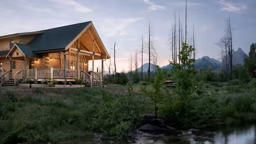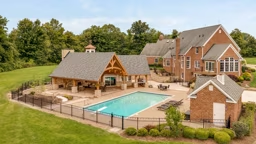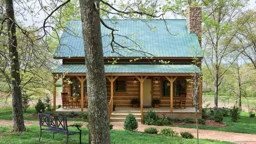
One of the most difficult aspects of building a log home is deciding which floor plan to select. Plenty of factors will impact the final plan: the terrain, the current and future size of the family, current and future activities, amount of “stuff” you plan to showcase, your budget, and even the personalities of the family members. Adding to the pressure is the fact that once your log home is built, the floor plan cannot be easily or inexpensively changed — so these room-by-room decisions are pretty important. Complicating matters is the fact that there are thousands of floor plans from which to choose, and narrowing them down or picking different aspects from a menu will take a pretty dedicated effort.
Finding your plan
There are several ways to arrive at the floor plan that’s right for you. The easiest (and generally least expensive) is to buy one from a plan book or a log home producer without making any changes to it. Most log home producers carry a large selection of stock plans from which to choose. Dozens of plans sortable by square footage are also available at loghome.com/floorplans. A second method is to have an independent architect or log producer’s in-house design team design your home from scratch. There are obviously costs involved for this kind of work.
The third and most popular method, though, is selecting a stock floor plan from a log home manufacturer and changing it to suit your needs. Most people prefer working with stock plans instead of designing from scratch “because they need something they can see,” says Lynn Gastineau of Gastineau Log Homes, New Bloomfield, Missouri. “Many people find it hard to visualize a home’s layout. But if they can see something in black and white, they have something to start with.” From there, almost any plan can be modified to meet a family’s needs.
Costs of reworking a plan
Customizing a standard plan can be relatively inexpensive — it all depends on the degree to which you change your plan. Simple changes, such as moving windows or interior walls, are mainly cosmetic and won’t significantly impact your budget — they don’t impact the basic structure of the building or increase the type or amount of materials. If you’re making minor changes, your costs might include a redrawing fee based on the time it takes the designer to modify a stock plan or the difference in materials.
There are instances, however, where owners significantly alter plans — rooms are added, ceilings are raised, stairs are moved, the kitchen is expanded, or different materials are used. “Any plans that require walls to be moved, layouts to be changed, or structural support systems to be redesigned will require you to commission extensive redesign and drafting,” says Peter Asher of Peter Asher Designs, an architectural firm in Oregon. Extensive structural changes — especially if they increase the size of the home —will significantly affect your budget. The material requirements for your home will increase and change. When somebody makes a change to a stock plan, the additional costs are associated more with materials, according to designers at Northeastern Log Homes, Groton, Vermont.
“For instance, a request for more windows could add $5,000 to $10,000 to the cost of the home. However, if someone just wants to replace a window with a sliding glass door, then the additional cost is just the cost difference between those two items.” You’ll also probably pay a redesign fee, particularly if you make significant changes and the plans need to be redrawn one or more times.“To purchase a set of stock plans and have them modified to suit your building site, local codes or personal needs could cost anything from $1,000 to $3,000 — sometimes more — for a 2,000-square-foot house,” Asher says. “A comparable custom design might cost $4,000 to $6,000.” Your log home producer may very well waive any sort of customizing redesign involving only one or two changes; the policy is usually in the package contract. But beyond this they may charge by the hour or based and the number of changes. If you haven’t settled on a producer and you think you may be doing a lot of customizing, ask prospective log partners about the policy for redesign charges.






_11868_2024-09-17_08-44-256x288.avif)




